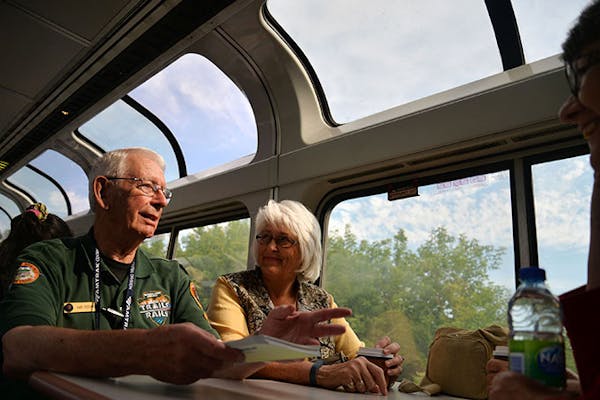Amtrak's Empire Builder passenger rail service, which passes through the Twin Cities, suffered the biggest drop in ticket revenue this year of any of the 15 major lines on its national network.
The $4 million setback accounted for a large share of the $13 million drop collectively among the national lines, including such iconic services as the City of New Orleans.
Cheaper gas is partly to blame, having hurt public transportation of all kinds in recent years. But the Empire Builder has suffered as well from delays caused by trains serving the oil boom in North Dakota.
"We've had some tough operating years," said Marc Magliari, Amtrak regional spokesman in Chicago. "There was a lot of freight congestion in 2013, 2014.
"We've started to see improvements, but our on-time performance is still not what we'd like it to be, though it's better than it was."
The boom in the western North Dakota oil patch should have boosted the numbers; and indeed, Minot and Williston, N.D., have been second only to Chicago as origins and destinations for Minnesota riders.
But ridership along the Minnesota and Twin Cities portion of the line has been off substantially.
Since 2008, a year of severe spikes in gas prices, Minnesota ridership has fallen from nearly 200,000 to 136,000 in 2014. In the Twin Cities alone, ridership dropped from 138,000 to 90,000 during that same period, even as hundreds of millions of dollars have been invested in a highly praised renovation of Union Depot in downtown St. Paul.
Overall, Amtrak ridership dipped slightly this year, from 30.92 million passengers in fiscal 2014 to 30.88 million in fiscal 2015.
The Empire Builder's ridership, however, fell by 3 percent in the same period, down to 438,000 passengers, according to an internal spreadsheet provided to the Star Tribune by Amtrak officials. That was the seventh fastest drop among the 15 lines on the national network.
Ticket revenue was down by $4 million, to $50.5 million, the biggest drop in dollar terms among the 15 lines. The percentage drop, 7.3 percent, was the third largest.
Amtrak, however, believes it's recovering, Magliari said.
"We had strong gains in the last few months of the fiscal year as we had a more reliable, better product, and we expect to improve even more," he said.
David Peterson • 651-925-5039

A plume of PFAS chemicals under the east metro is moving. The state has a new plan to stop it.

Andover High School teacher leads effort for more understandable driver's tests

Trail section at one of Minnesota's most iconic spots closing for rehab

Will 'shotgun only' zone for deer in southern Minnesota be abolished?

